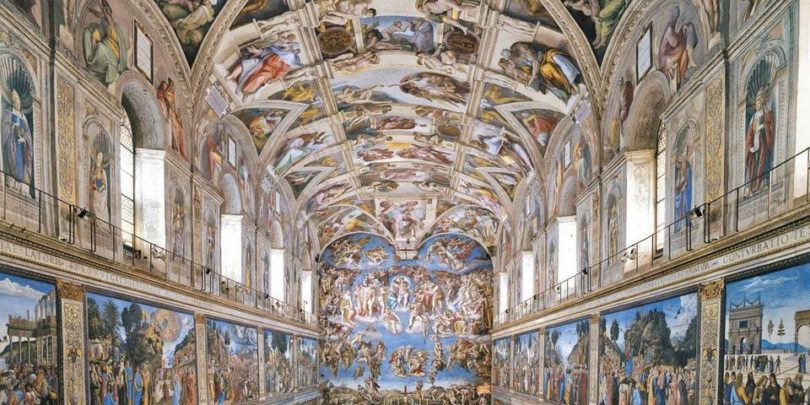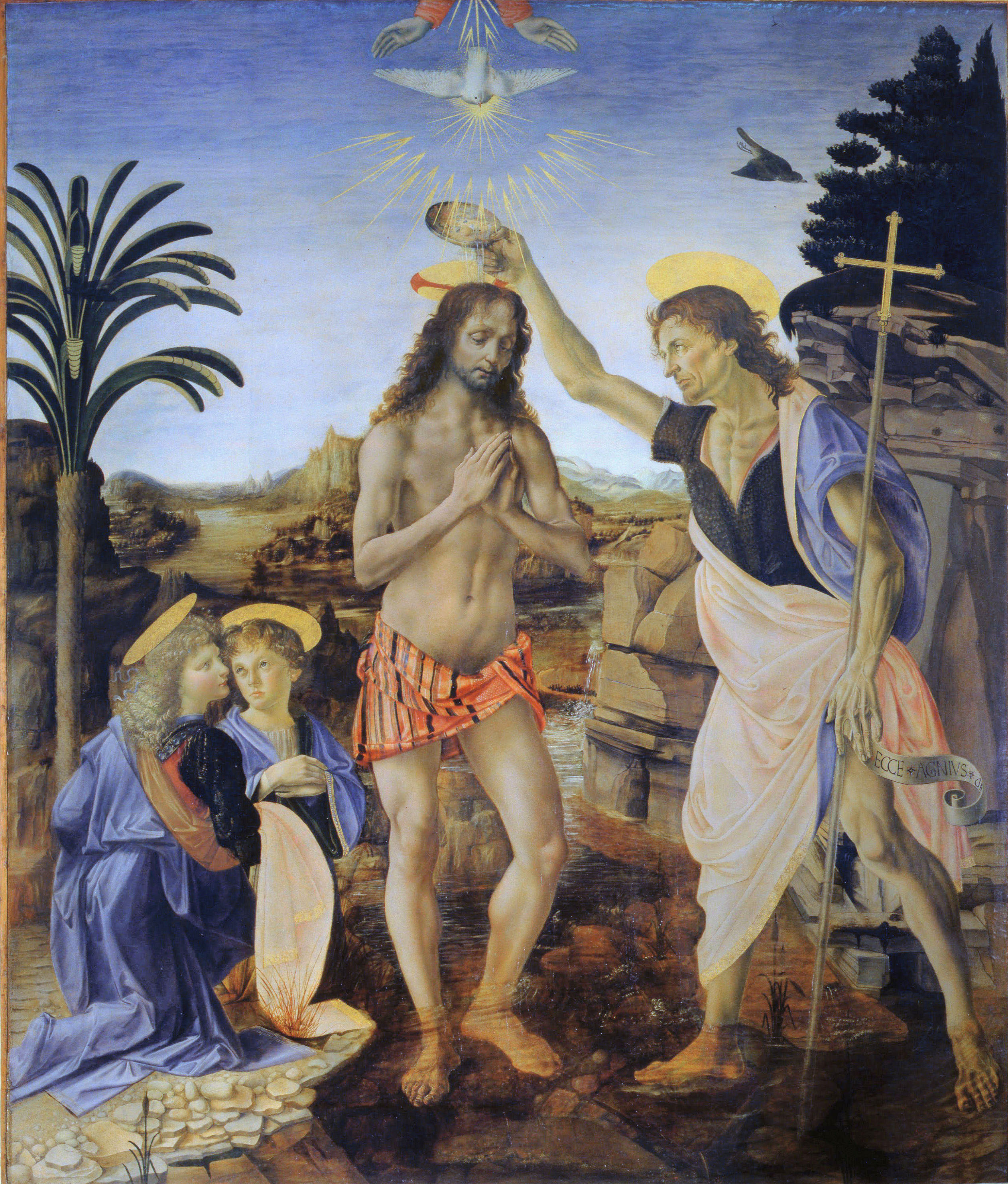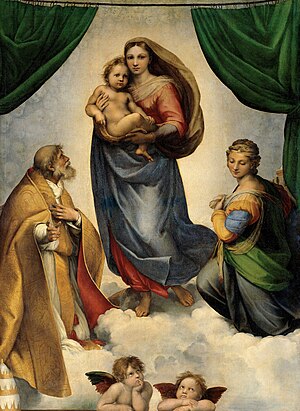
Title: David of Michelangelo
Artist: Michelangelo
Date: 1501-1504
Dimensions: 517 cm by 199 cm
Medium: Marble sculpture
Accreditation: Accademia Gallery
Wall Label: This marble sculpture of David portrays the biblical story of David when he manages to defeat Goliath, a huge enemy that no one had defeated yet. This particular portrayal of David takes place before David sets off to fight Goliath. From the sheer detail to its great size, the sculpture is an extraordinary work of art that many have ended up admiring as a result. The way David’s body is shaped seems to suggest that he is indeed ready to move on forth, as his body torso is twisted and the sling is loaded.

Title: The Last Judgment
Artist: Michelangelo
Date: 1535-1541
Dimensions: 13.7 m by 12 m
Medium: Fresco painting
Accreditation: Vatican Museums
Wall Label: This fresco painting portrays the second coming of Christ as he returns to judge all of humanity once and for all. The painting itself contains many vibrant colors, which assist in making the overall scene colorful and bright. One thing to notice is how Michelangelo depicted all the saved people on the left side, with them ascending higher and higher, and on the right side he drew the punished people with them descending. The significance of people is also shown through their size, such as Mary and the Saints.

Title: Sistine Chapel Ceiling
Artist: Michelangelo
Date: 1508-1512
Dimensions: 20.7 m by 13.4 m
Medium: Fresco painting
Accreditation: Sistine Chapel
Wall Label: This ceiling of the Sistine Chapel is a huge fresco created by Michelangelo that includes many other different frescoes, including the Last Judgment. Scenes such as the 12 Prophetic figures, The Book of Genesis, and the Ancestors of Christ were all drawn as part of the Sistine Chapel ceiling. The overall theme of the fresco is to emphasize that humans are in need of God through Christ. Considering that God made the world and that humans eventually became sinful, it is necessary for them to have God’s help.

Title: Mona Lisa
Artist: Leonardo Da Vinci
Date: 1503
Dimensions:77 cm by 53 cm
Medium: Oil on poplar panel
Accreditation: Louvre Museum
Wall Label: The Mona Lisa portrait is one of the most well-known artworks throughout history such that people have heard of it although they might not be involved in art. It is a portrait of noblewoman Lisa Gherardini, and to some degree shows realism. This artwork utilized many of Da Vinci’s techniques, from his imaginary landscape background to using an aerial perspective. As such, it gave the painting depth that it normally wouldn’t have, and helps make the painting even more realistic than ever before.

Title: The Last Supper
Artist: Leonardo Da Vinci
Date: 1495-1498
Dimensions: 460 cm by 880 cm
Medium: Tempera on gesso, patch, and mastic
Accreditation: Santa Maria delle Grazie
Wall Label: This painting of Christ and his disciples is an extremely well-known painting drawn by Da Vinci, and highlights a very important biblical story. The painting portrays the disciples of Christ as very confused and angry after Christ informs them of the news that one of them will betray him. One thing Da Vinci used was to make all the disciples be visible from the front and not from the back so that it was possible to see all of them at once.

Title: The Baptism of Christ
Artist: Leonardo Da Vinci
Date: 1472-1475
Dimensions: 177 cm by 151 cm
Medium: Oil paint
Accreditation: Uffizi Gallery
Wall Label: This painting of the baptism of Christ created by Da Vinci and Verrochio depicts yet another biblical scene, with this one representing how Christ was baptized by John the Baptist. In the painting, the angels behind Christ help hold his garments while John pours the water above Christ’s head. At the very top of the painting itself, the hands of God are shown from Heaven, and together with the shining light in the background, it symbolizes that Christ is indeed a divine being sent by God.

Title: The School of Athens
Artist: Raphael
Date: 1509-1511
Dimensions: 500 cm by 770 cm
Medium: Fresco painting
Accreditation: Apostolic Palace
Wall Label: This fresco made by Raphael consists of other smaller frescoes in which branches of knowledge are depicted. Some examples include poetry, theology, and philosophy, just to name a few. The point of this fresco is to emphasize the importance of knowledge in today’s society, and help people learn more about stuff around them. Many different Greek philosophers such as Aristotle and Plato, who both did research on space and the solar system, can be found in this painting as well as others who made significant contributions.

Title: Sistine Madonna
Artist: Raphael
Date: 1512
Dimensions: 265 cm by 196 cm
Medium: Oil on canvas
Accreditation: Gemaldegalerie Alte Meister
Wall Label: This painting made by Raphael was one of the last remaining Madonna artworks created, and is one of the more well-known paintings created by Raphael. The painting depicts a story in which Madonna holds Christ with 2 saints alongside her, with clouds underneath her feet as well as 2 winged angels. Eventually, this painting became very prominent once it found its way to the palace of Augustus, and it became one of the great icons during its time, inspiring many different kinds of people.

